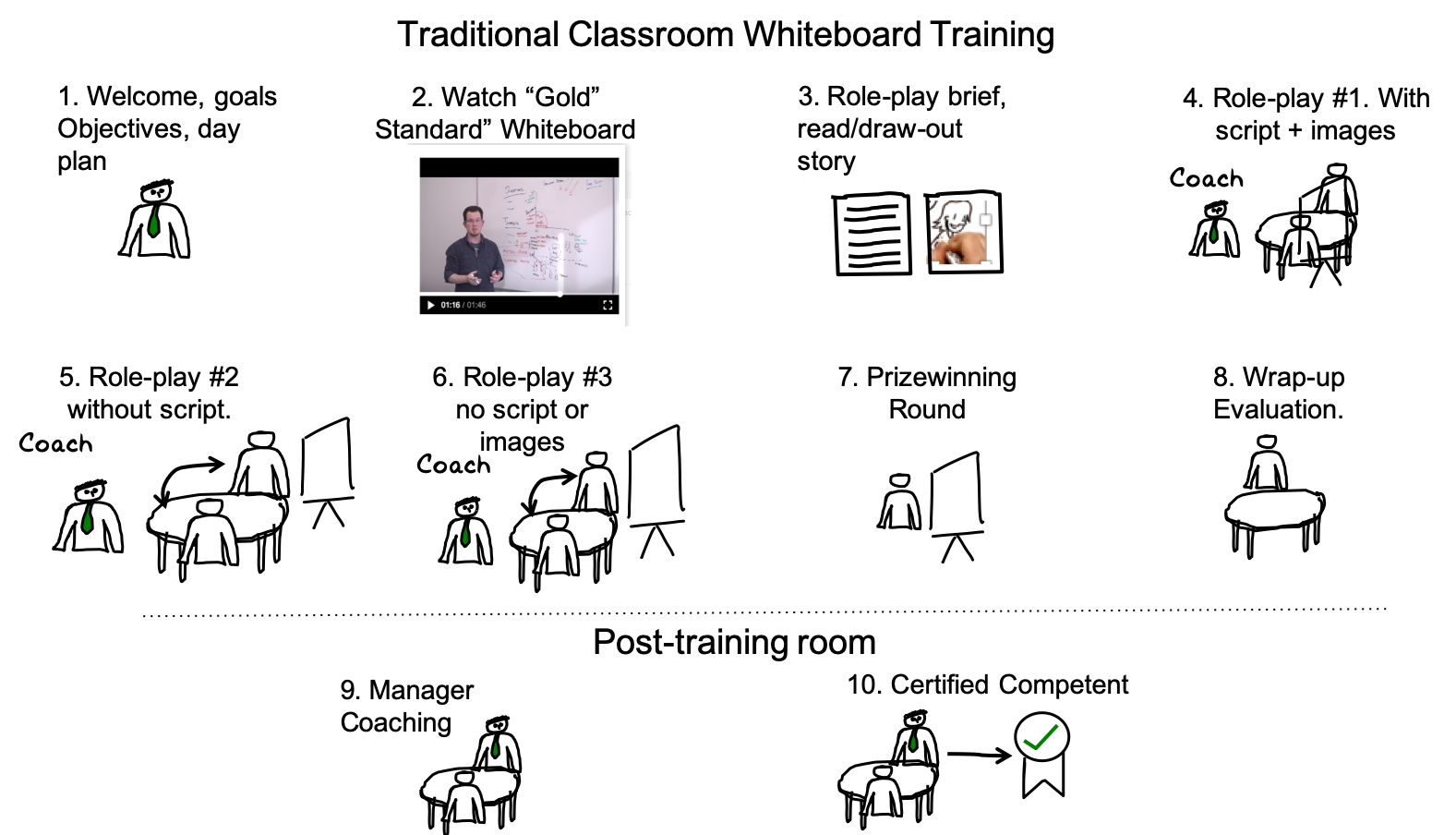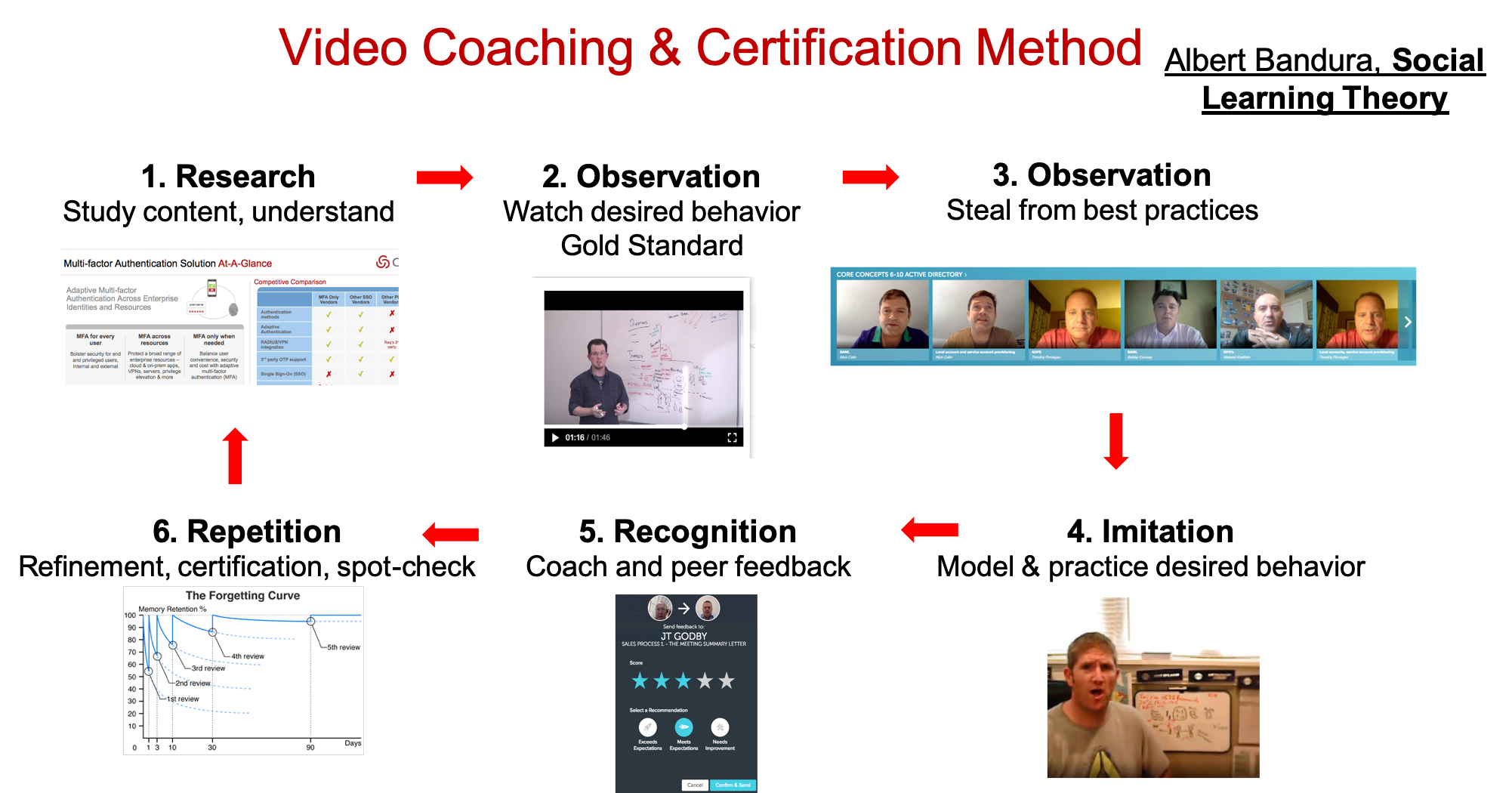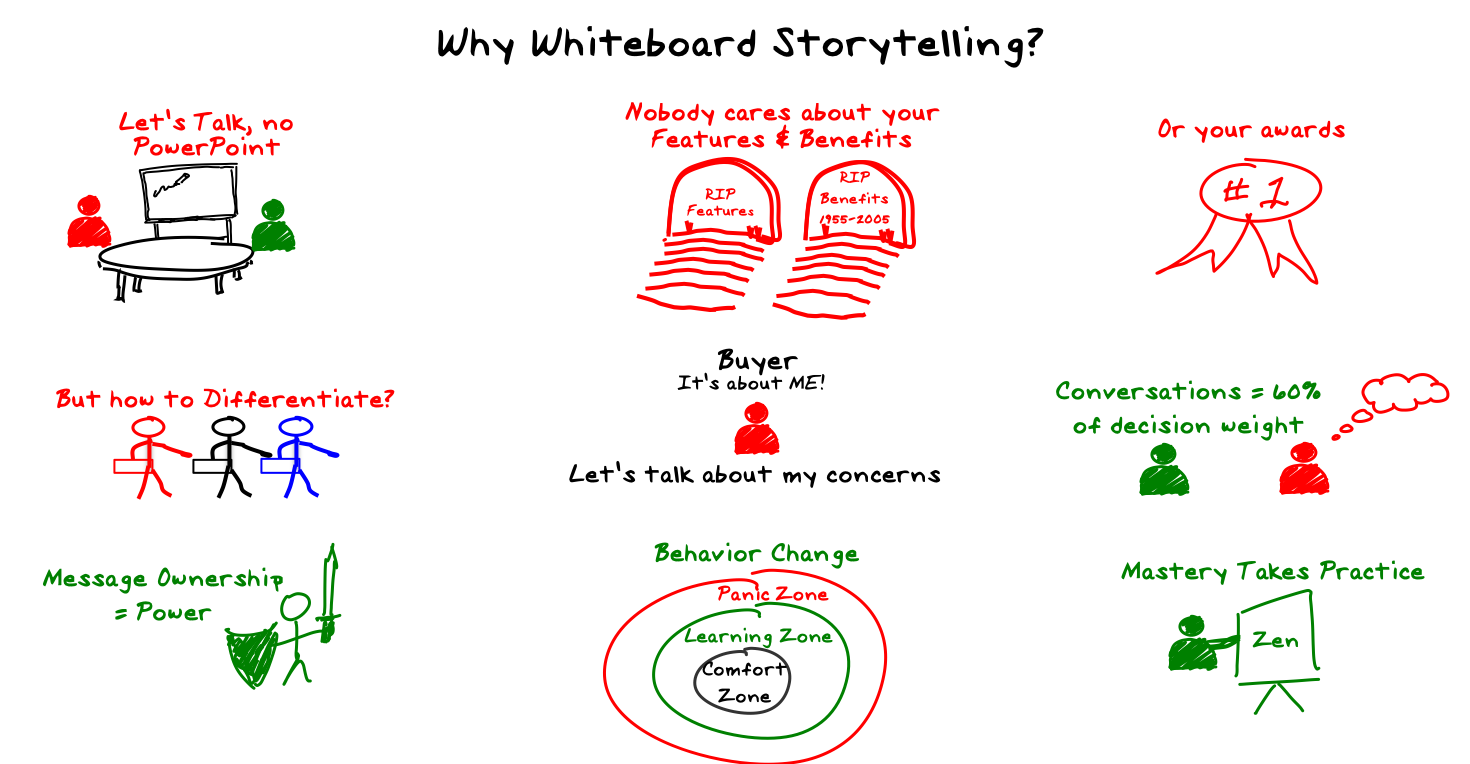In my previous post, How Much Does a Whiteboard Story Cost to Create?, I discussed the cost elements associated with developing various types of whiteboard story.
This post explores methods for training salespeople to master the whiteboard story as well as recommended best-practices to ensure that important story chunks are retained in long term memory to create situational fluency, confidence and to build trust and create buyer momentum.
There are three common modes of delivering whiteboard storytelling training, they are;
- In-person, instructor-led classroom whiteboard storytelling symposiums,
- Live, instructor-led video-conference event with local participants and remote participants joining via video conference.
- Self-paced video coaching, via a modern eLearning platform that supports video rehearsal and mastery with coaching.
The Traditional Whiteboard Storytelling Symposium
The traditional method of whiteboard storytelling training is in-person classroom training, with teams of 3, led by an instructor, and a whiteboard or flip chart, shared between each team. The traditional workshop can take between 3- 4 hours to run per whiteboard story, depending on the number of iterations and whether a competition is held, and prizes awarded for best performers.

Live whiteboard training can be scaled for delivery to thousands of salespeople at sales kick-off events. In large groups salespeople are split into manageable groups of several hundred and are facilitator-led, with support from coaches and managers who have done the whiteboard prior to the event.
Evolved Whiteboard Storytelling Training
While at Centrify, we evolved Whiteboard classroom training to enable whiteboard training to be delivered to a channel sales team in one hour with the same number of iterations using three different methods of visual storytelling.
The video case-study video below. runs about 8-minutes and explains the training we developed for Centrify Channel partner CDW.
In recent years with efficient video conferencing platforms like Zoom, live instructor-led whiteboard training has gained momentum to reduce travel cost.
At a Centrify channel training events with CDW, we ran a hybrid session with some of the team in-house and others joining by Zoom video conference. With hindsight, live instructor-led whiteboard training with remote students is the least effective of the three methods outlined.
Modern eLearning, Video Coaching or Virtual Training
Modern E-learning platforms that support “social-learning-theory” enable whiteboard training and situational training to be effectively delivered on-demand, and supported by managers and specialist coaches.
Corporate Visions recently conducted research in a report "Can Virtual Training be Better than Classroom" comparing the different modes of training. The study found that virtual training reduces training cost by up to 50% and reduces rep time out of the field. Perhaps most importantly it has been proven to deliver 23% more pipeline than in-classroom training and reps who complete it feel twice as confident in front of buyers.
At Centrify, we used "HireVue Coach" for video coaching, but there are other major players including:
- SalesHood
- Commercial Tribe
- Allego
- LevelJump
- MindTickle
- And many more
Social Learning Theory
"Social learning theory is a theory of learning process and social behavior which proposes that new behaviors can be acquired by observing and imitating others. It states that learning is a cognitive process that takes place in a social context and can occur purely through observation or direct instruction, even in the absence of motor reproduction or direct reinforcement." source wiki.

- Research: the salesperson studies underlying concepts to build domain knowledge,
- Observation: the salesperson watches a video recording of a gold standard presentation and practices it themselves
- Absorb Best-Practices: the salesperson learns from observing other top performers
- Imitation: The salesperson models the behavior of others, practices and gains confidence and competence in delivering the story.
- Recognition: The salesperson submits their version of the whiteboard, is coached by their manager, given remedial work if required and certified when they achieve the desired standard.
- Repetition: Overcoming Ebbinghaus’ forgetting curve requires periodic reinforcement in the weeks and months following certification.



